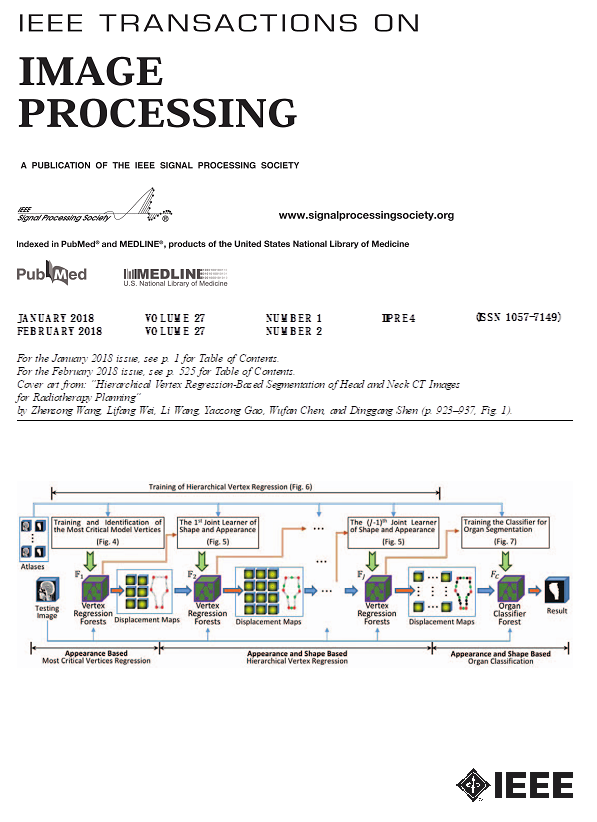基于位面信息重组模型的数据增强
IF 13.7
1区 计算机科学
Q1 COMPUTER SCIENCE, ARTIFICIAL INTELLIGENCE
引用次数: 3
摘要
深度学习的性能在很大程度上取决于训练数据的数量和质量。但是在很多领域中,很好的标注数据很难被收集到,这使得数据规模难以满足网络训练的需要。针对这一问题,本文提出了一种基于位面信息重组模型(BIRD)的数据增强方法。该方法考虑到每个位平面在不同的细节层次上可以提供不同的结构信息,将给定图像的内部层次结构划分为不同的位平面,并通过位平面提取、位平面选择和位平面重组对其进行重组,形成具有不同图像细节的增强数据。对于给定的8位图像,该方法可以生成多达62倍的训练数据。此外,该方法具有模型自由、参数自由、易于与各种神经网络结合、不改变原始标注数据等特点。以遥感图像的目标检测和自然图像的分类任务为例,在DOTA数据集和CIFAR-100数据集上的实验结果表明,我们提出的方法不仅对数据增强有效,而且有助于提高目标检测和图像分类的精度。本文章由计算机程序翻译,如有差异,请以英文原文为准。
Data Augmentation Using Bitplane Information Recombination Model
The performance of deep learning heavily depend on the quantity and quality of training data. But in many fields, well-annotated data are so difficult to collect, which makes the data scale hard to meet the needs of network training. To deal with this issue, a novel data augmentation method using the bitplane information recombination model (termed as BIRD) is proposed in this paper. Considering each bitplane can provide different structural information at different levels of detail, this method divides the internal hierarchical structure of a given image into different bitplanes, and reorganizes them by bitplane extraction, bitplane selection and bitplane recombination, to form an augmented data with different image details. This method can generate up to 62 times of the training data, for a given 8-bits image. In addition, this generalized method is model free, parameter free and easy to combine with various neural networks, without changing the original annotated data. Taking the task of target detection for remotely sensed images and classification for natural images as an example, experimental results on DOTA dataset and CIFAR-100 dataset demonstrated that, our proposed method is not only effective for data augmentation, but also helpful to improve the accuracy of target detection and image classification.
求助全文
通过发布文献求助,成功后即可免费获取论文全文。
去求助
来源期刊

IEEE Transactions on Image Processing
工程技术-工程:电子与电气
CiteScore
20.90
自引率
6.60%
发文量
774
审稿时长
7.6 months
期刊介绍:
The IEEE Transactions on Image Processing delves into groundbreaking theories, algorithms, and structures concerning the generation, acquisition, manipulation, transmission, scrutiny, and presentation of images, video, and multidimensional signals across diverse applications. Topics span mathematical, statistical, and perceptual aspects, encompassing modeling, representation, formation, coding, filtering, enhancement, restoration, rendering, halftoning, search, and analysis of images, video, and multidimensional signals. Pertinent applications range from image and video communications to electronic imaging, biomedical imaging, image and video systems, and remote sensing.
 求助内容:
求助内容: 应助结果提醒方式:
应助结果提醒方式:


